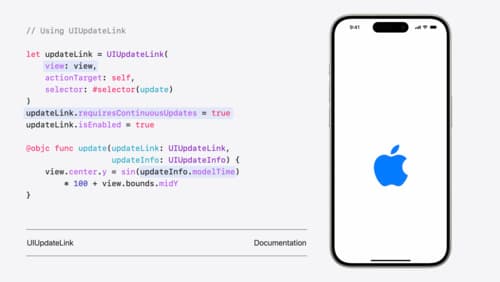When was UIStackView introduced?
Asked on 2024-07-31
1 search
UIStackView was introduced in iOS 9, which was announced at WWDC 2015. This information is not directly available in the provided context, but it is a well-known fact about the history of UIKit.
For more recent updates and enhancements to UIKit, you can refer to the session What’s new in UIKit from WWDC 2024.

Platforms State of the Union
Discover the newest advancements on Apple platforms.

What’s new in UIKit
Explore everything new in UIKit, including tab and document launch experiences, transitions, and text and input changes. We’ll also discuss better-than-ever interoperability between UIKit and SwiftUI animations and gestures, as well as general improvements throughout UIKit.

SwiftUI essentials
Join us on a tour of SwiftUI, Apple’s declarative user interface framework. Learn essential concepts for building apps in SwiftUI, like views, state variables, and layout. Discover the breadth of APIs for building fully featured experiences and crafting unique custom components. Whether you’re brand new to SwiftUI or an experienced developer, you’ll learn how to take advantage of what SwiftUI has to offer when building great apps.
